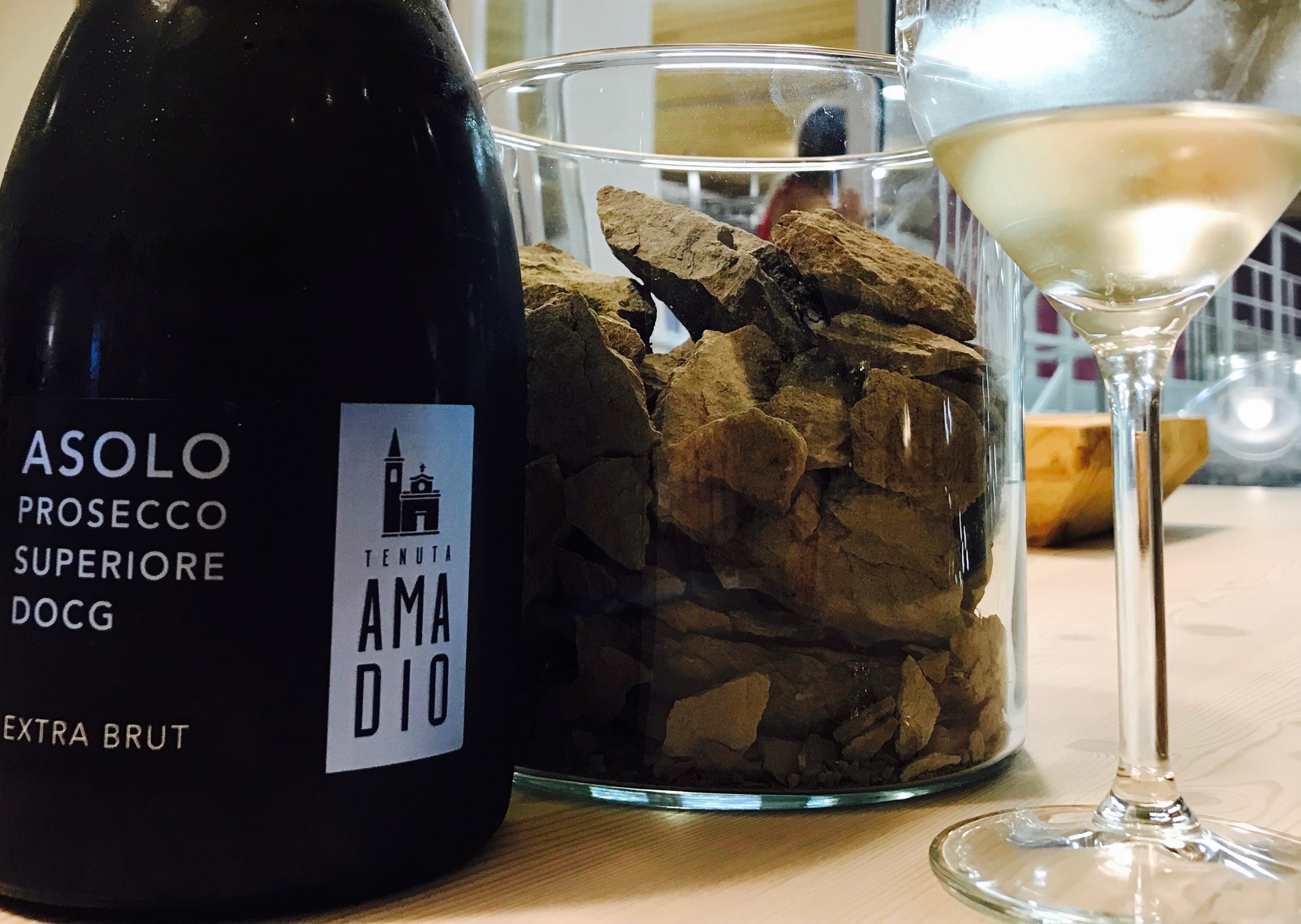We visit Bele Casel, Tenuta Amadio, and Villa Sandi – all producing Asolo Prosecco Superiore DOCG
I got an email a few weeks back that made me realise I hadn’t listened hard enough in the Sparkling Wine bit of my WSET Diploma. There was a press trip coming up to a place called Asolo in Prosecco and, embarrassingly enough, it was not ringing any bells. I couldn’t actually make the trip, but my ignorance nudged me to ask if I could just rock on over next time I was visiting the area.

Overlooking the South-facing slopes of reclaimed land where Bele Casel have planted vines
OK, slight mistake, as it’s a six hour drive from Piemonte. Sod it, a couple of cheeky paninis and espressos on the Autostrade and before I knew it I was deep in Prosecco country for the first time.
Prosecco is very much a brand. There are few wine lovers that don’t have an opinion on what it means to them. Unfortunately most will think of the cheap and nasty industrial fizz from the ever-expanding flatlands. Prosecco DOC now covers huge swathes of Veneto (it’s original homeland), but also Friuli to the North East. When it’s a case of big business versus the reputation of a product, there is only usually one winner.
As far as my clearly sketchy knowledge would have it, there were still one or two shining lights; the dual region of Conegliano Valdobbiadene is Prosecco Superiore country. Interestingly I worked out that if you’re from Conegliano, you just say Conegliano DOCG. If you’re from Valdobbiadene then… well you get the picture. You’ve got to love Italians, eh?
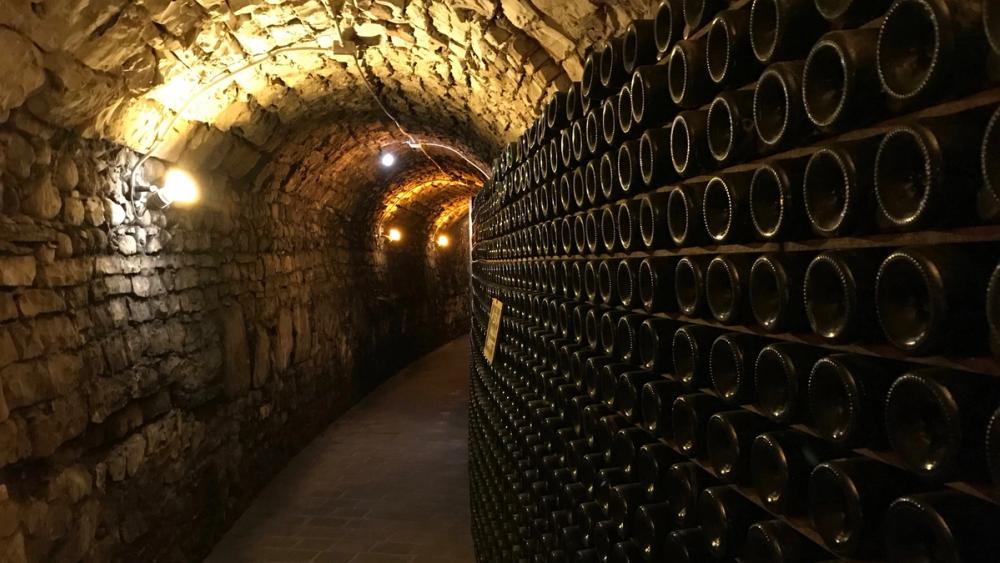
Amongst these rolling hills are genuine wines of quality. Soils to the west shaped by Dolomite glaciers, and to the east from marine movements. Maybe I’ll let the fierce regionality off given the huge mix of soils. Oh, and don’t forget the hill of Cartizze producing world class wines that are genuinely impressive even for the most die-hard anti-Prosecco-snobs.
OK, so time for me to get schooled.
These rolling hills aren’t limited to this side of the Piave River. To the south west of the river valley lies the region of Asolo, which was going to be my home for a rapid two days of sightseeing and wine drinking.
Based around the glorious UNESCO town of Asolo, and established by rich Venetian traders escaping the plebs in the summer, the region is dotted with vineyards and palatial villas. Our base town of Mazer is home to one of the most famous.
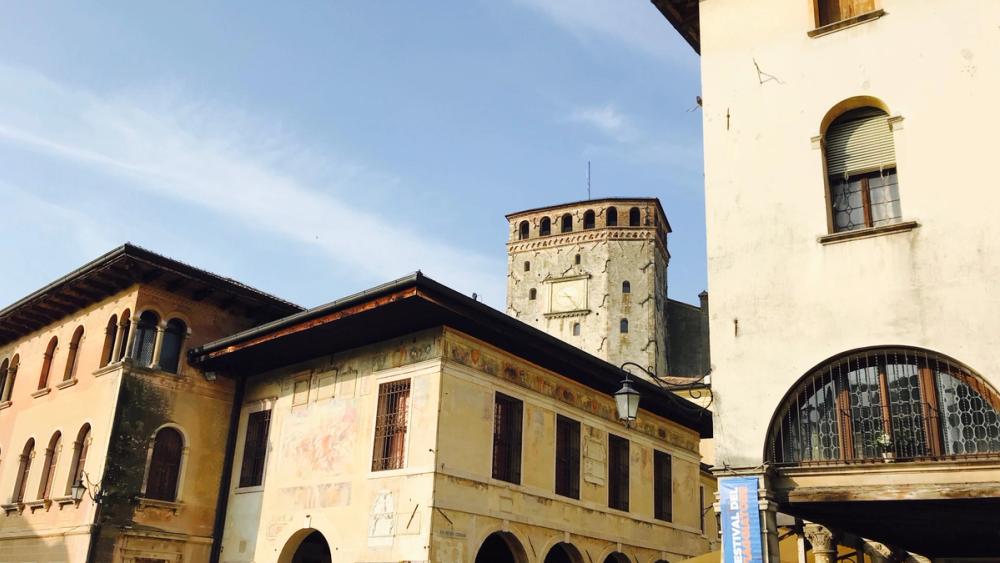
Asolo: nice here innit?
I was kindly hosted by producers Bele Casel, Tenuta Amadio, and Villa Sandi. All very different in their own way.
The familial farming ethos of Bele Casel was very evident as we drove dirt tracks in a 1960s FIAT 500 to check out their pride and joy, their newly planted south-facing vineyards on reclaimed land. A sure sign that the region is beginning to gain confidence to move forward and take itself seriously.
Tenuta Amadio has built its business on a long family background, but huge investment is evident with a shiny new cellar, shop, visitor centre, and tasting room. Recognising the tourism element of wine regions is not always as speedy as it should be, even in regions as obviously appealing as this. The Asolo region is geared up for it.
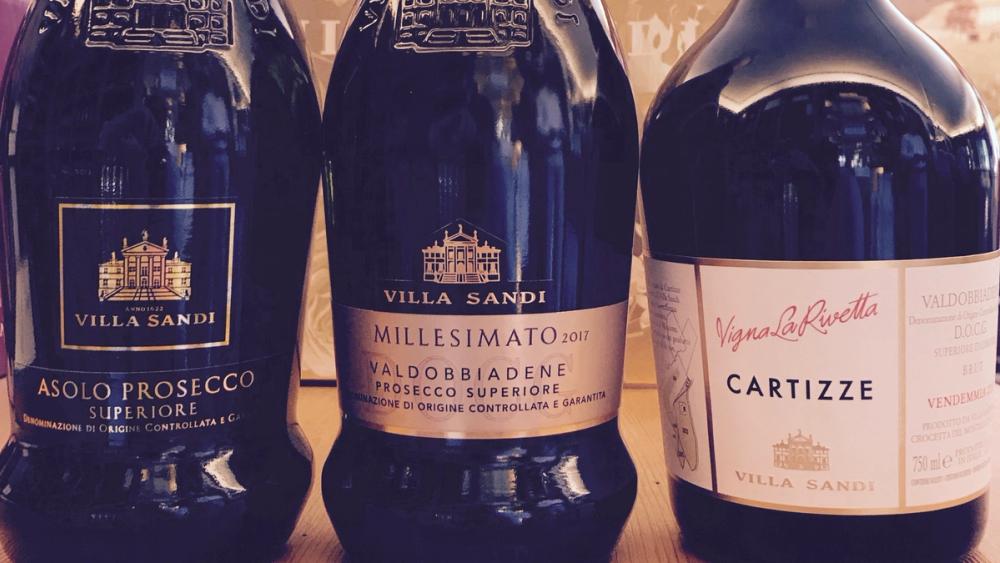
Villa Sandi speaks for itself. This is a massive set up, with an impressive list of production, complete with a stunning 17thcentury villa for hosting balls, banquets, and little old me for about five minutes. History nuts will go potty for this place, as a nudge over 100 years ago the villa was the control centre for the Italian army facing the Austro-Hungarians on the other side of the Piave in WW1. Oh, and their Cartizze is AMAZING!!
The wines of Asolo themselves do have a distinction, with a clear salinity, extra minerality, and a freshness. Now that may sound really dumb when you’re comparing it to other Prosecco, especially C-V DOCG, which is also famed for its minerality and freshness. But if you get a chance to taste them together, you’ll work it out, trust me. It’s the marine soils, innit?!
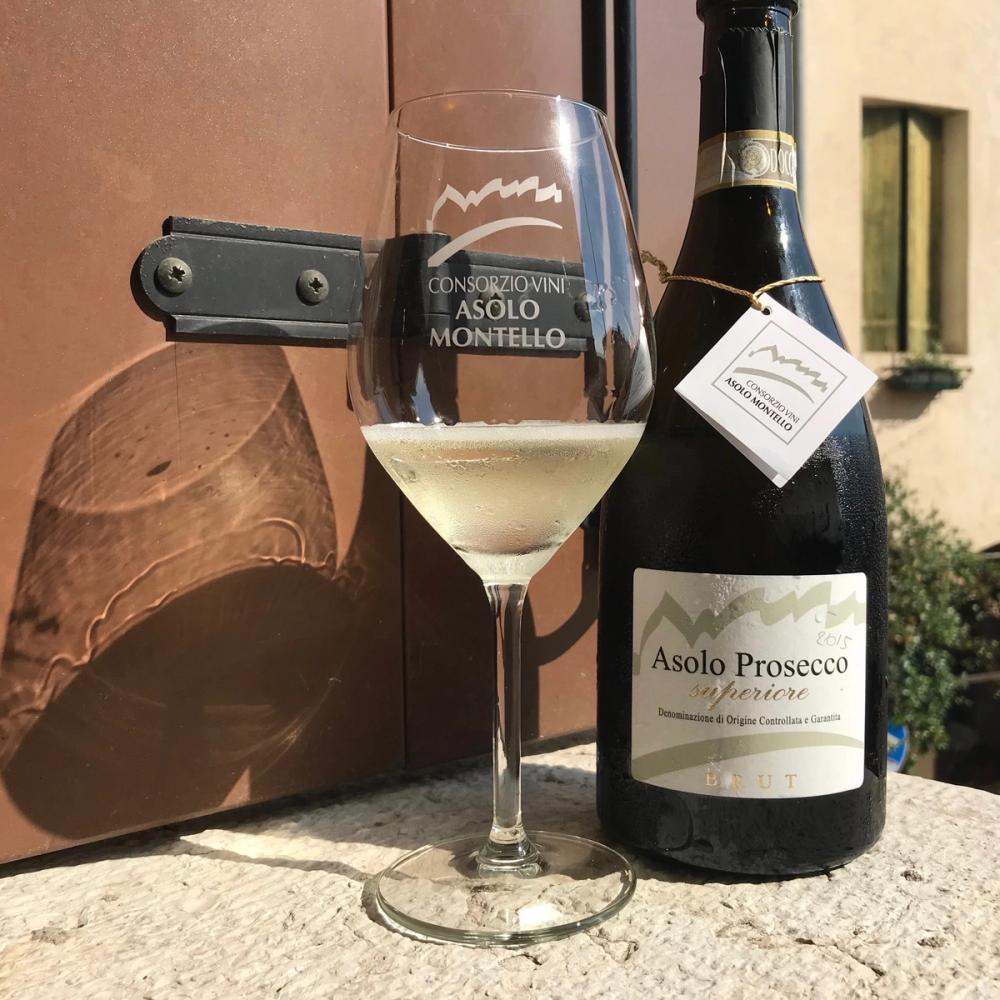
So what does this all mean for you lot?
If you’re running a wine shop somewhere, or running a wine list at a restaurant, you’re probably thinking this is all very well, but how many Proseccos do I need on the list? Let’s be fair, it’s probably two or three at most. One bog standard, one Superiore DOCG, and a Cartizze or Rive at the top end. Job done, right?
That’s probably fair, but there are two points I’d make before I leave you all to your days. First up, this is an alternative to Conegliano-Valdobbiadene, the main Superiore DOCG. I know I wouldn’t want to compete with Sainsbury’s Taste The Difference, which is what a lot of Prosecco punters will base your price on. So stocking the other, much more exclusive and lower volume Asolo Superiore DOCG isn’t the worst idea in the world.
The other is about continuing to drag Prosecco away from the cheap and nasty industrial flatlands. Asolo, Congliano, and Valdobbiadene are the towns in the heartland of old Prosecco, yet worryingly enough many producers (including Tenuta Amadio I might add) are considering dropping the word ‘Prosecco’ from their bottles completely. OK, that’s an extreme and, might I say, a bad idea… but I can sympathise.
I’m aware we’ve all got to pay the bills and that, but bog standard Prosecco is a complete anathema to most of us on the “drink less, drink better” side of things. There are other options and enough variation to show off Prosecco in a better light than has occurred in the past 10 years, and I’d encourage you all to have a good look.
Cheers
Huge thanks to the Consorzio Vini Asolo Montello for hosting me in September.

Mike Turner clearly trying to figure out why he left the world of banking to join the wine trade
